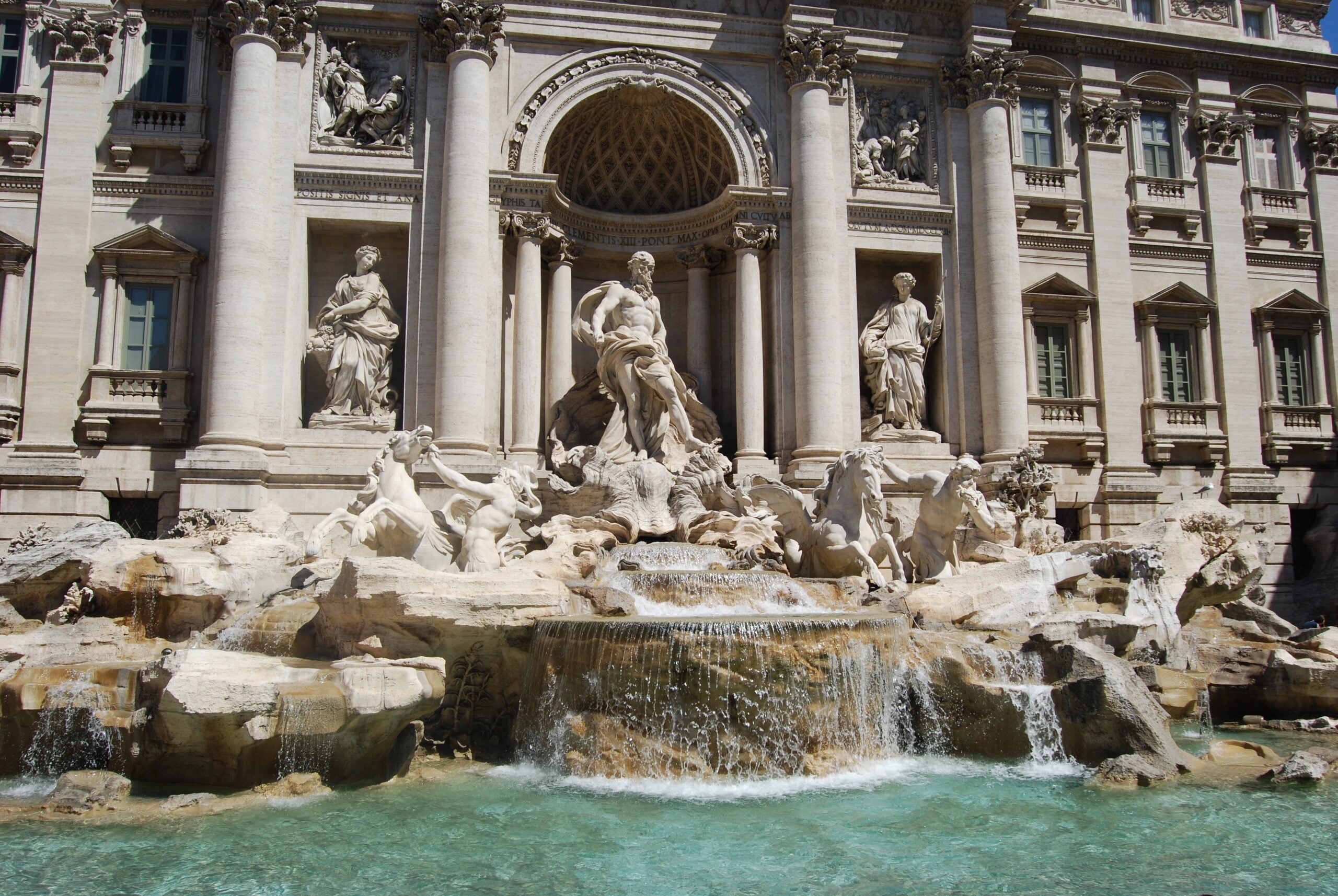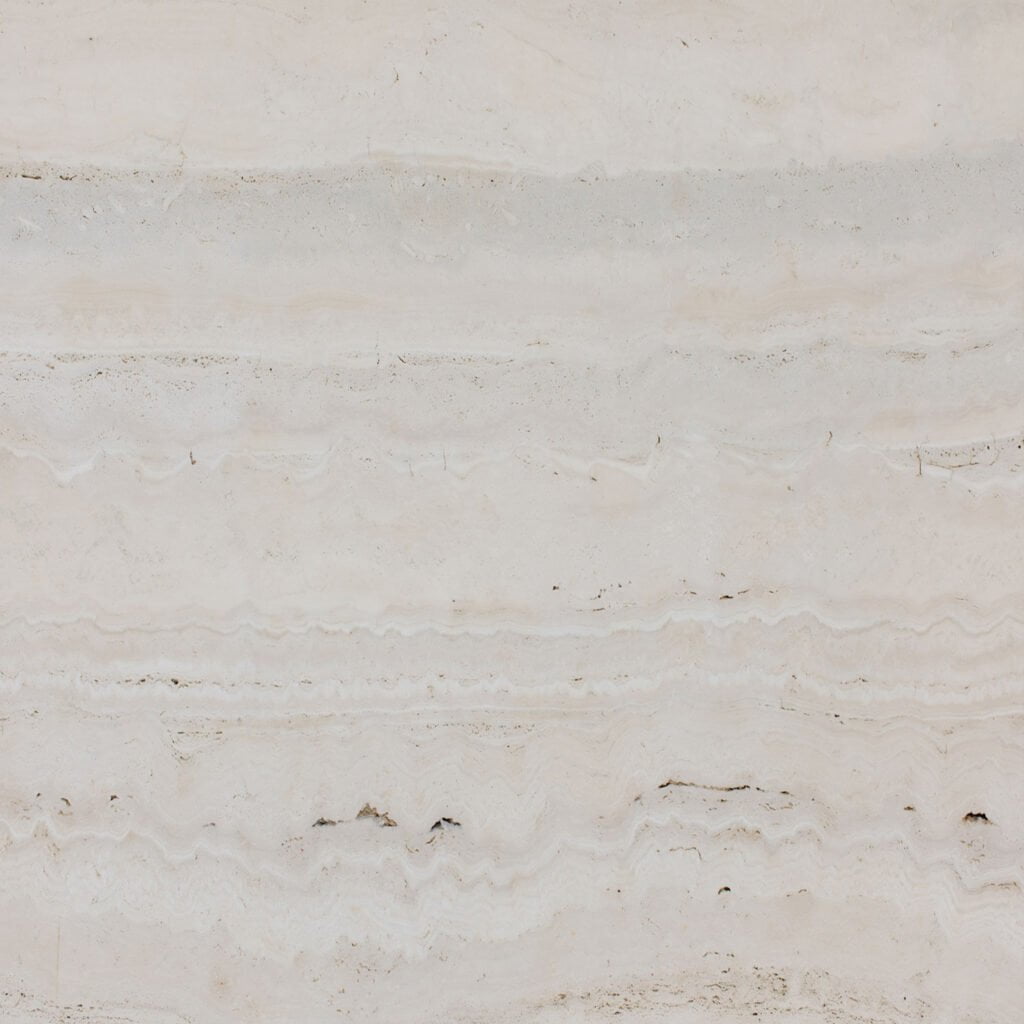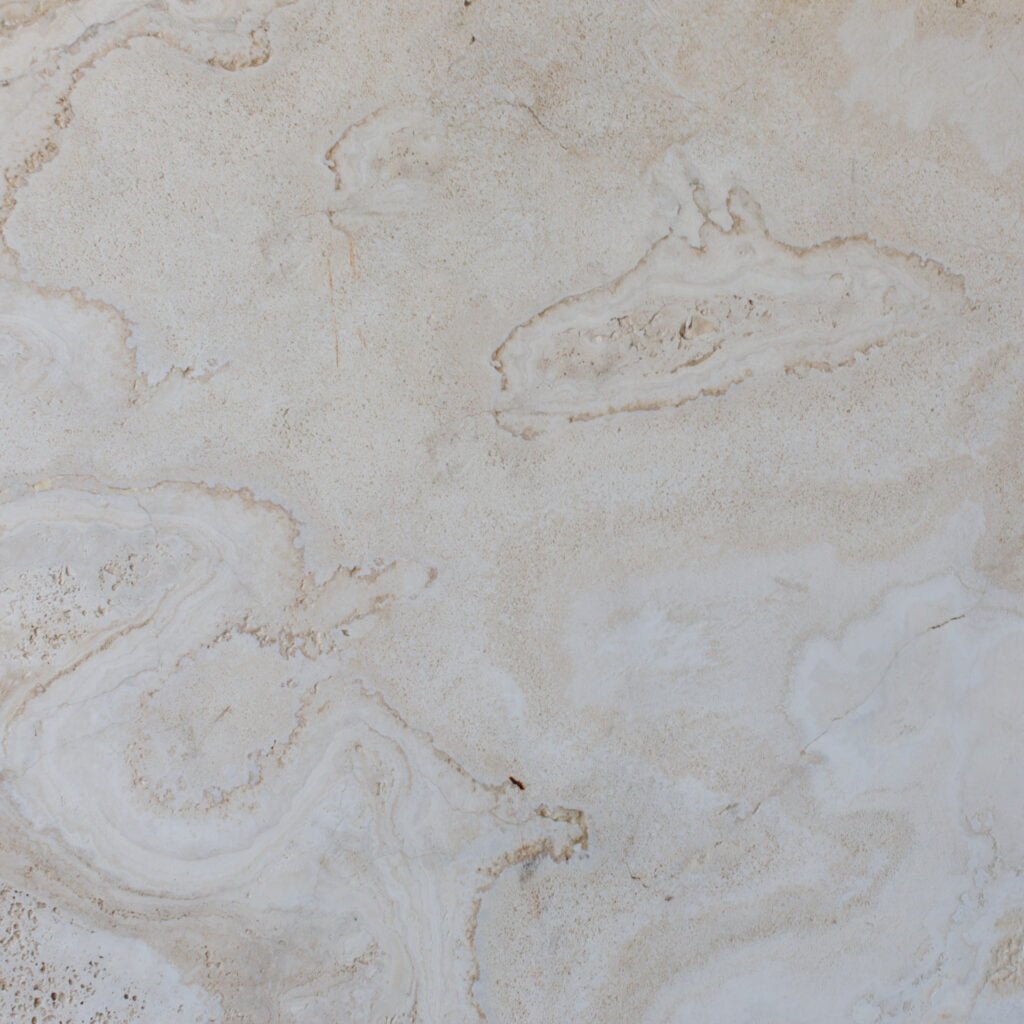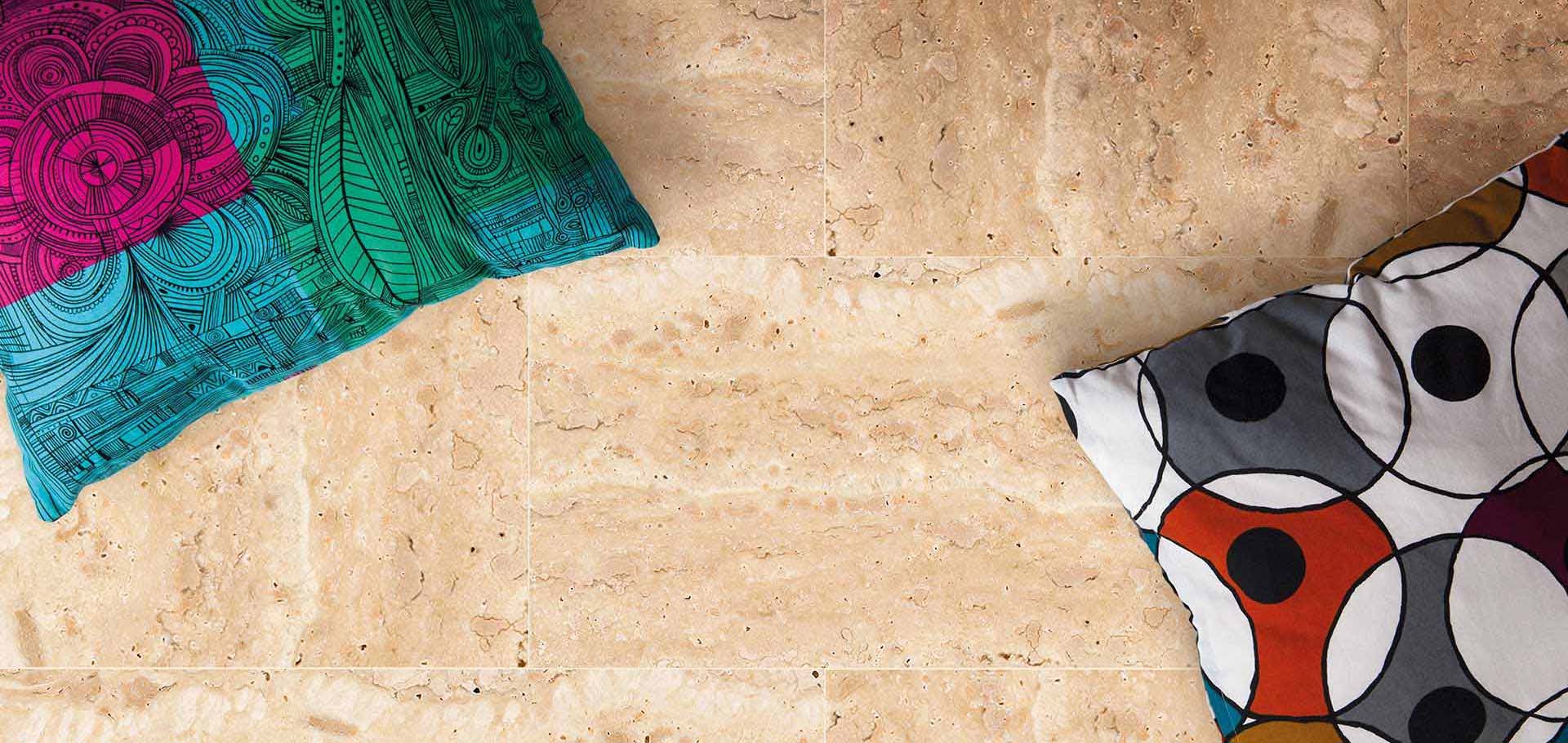Roman Travertine, Natural Uniqueness
Roman travertine is famous for its natural uniqueness. Indeed, nature creates inimitable scenarios and landscapes. From the kaleidoscopic color of the earth to the incredible variety of shapes and sizes of hills, mountains, plains. Everything that has a natural origin is therefore extraordinary and unrepeatable, a decisive solo in a theater with a thousand voices.
Travertine and Endless Beauty
Roman travertine that we extract from our quarries was formed through millennia of chemical reactions between water and calcium carbonate. It takes such a long time for minerals and other impurities to accumulate and settle in limestone deposits. This process is one of the most intense forms of art that nature has given to mankind.
The result after all is astonishing: every new layer of stratification ensures incredible traits to the stone. Each new block quarried is a surprise in matter of veining, shapes, colors, and proportions. In other words, each block is one of its kind, and the possibilities of making the most out of roman travertine natural uniqueness and inimitability are almost infinite.
Human categorization of color tonalities may help tell apart each variety of travertine that we extract at different depths of the same quarry. Nevertheless, blocks of roman travertine belonging to the same typology will always possess distinctive features that make them stand out among other natural stones.
Roman Travertine Durability and Value
As much as it is true that each block, slab and tile will always be unique with their peculiarities, this will not become a limit for a harmonious final look on the buildings, villas or residences that it will graciously dress up. Many contemporary architectural projects benefit from its great value.
As many already know, the roots of roman travertine use are embedded in the history of Ancient Rome. Romans strived for natural perfection and they found it in this natural stone. Its aesthetical characteristics and durable nature were so highly appreciated that many symbols of this civilization were made of it, one for all the Colosseum. Architects and sculptors of later periods inherited this love for the stone quarried in Tivoli and created astounding monuments, scattered all over Rome.

Modern uses of roman travertine display two different cuts, namely vein cut and cross cut. This choice helps the building to blend into the landscape, be it urban or rural. Nevertheless, this is manly a matter of taste. There is no limit to the application of travertine for exterior or interior decoration, for flooring or cladding. As long as quality Travertine is used and handled with proper care it is destined to last over time.


Have a look at our Atelier, where you can discover our instant availabilities of blocks, slabs and cut to size.



Follow Us On Social Media: